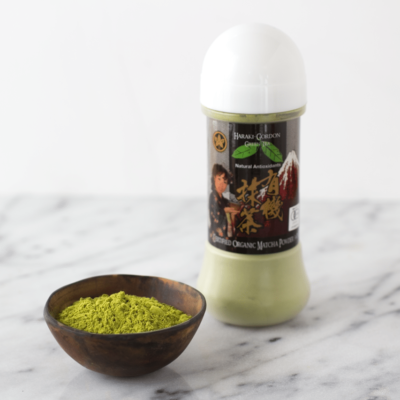 Food for Thought | “Everything you never cared to know”
Food for Thought | “Everything you never cared to know”
Some Cool Things You Probably Didn’t Know About Lemons:
- Lemons turn from green to yellow because of temperature changes, not ripeness, so green patches are OK, but avoid those with brown spots, because that means ROTTING!
- Bottled lemon juice is worthless. It may last a long time in your fridge, but all the preservatives and reconstitution make for an off, harsh flavor that’s nothing like the delicious essence of a freshly-squeezed lemon.
- Meyer lemons are a fruit native to China that are thought to be a cross between lemons and oranges. They were introduced to the United States in 1908 by the agricultural explorer Frank Nicholas Meyer.
- Lemongrass is only related to lemons in that it contains citral, and essential oil also found in a lemon rind. Southeast Asian cooking uses this exotic herb in salads, curries, etc.
- Preserved lemons in salt are a distinctive flavoring found in Moroccan and Middle Eastern cooking. You can find good homemade preserved lemons at a local Mediterranean grocery store.
- It’s the citric acid (and to some extent the vitamin C) in lemons that slows the oxidation, or browning, of fresh, raw foods.
- Most supermarket varieties of lemons are of the Eureka or Lisbon varieties.
- Limoncello is a traditional Italian digestif liqueur made from lemon rinds and vodka, which are allowed to co-habitate for a couple weeks and then married with simple syrup. My experience with limoncello was when I studied abroad in Italy for a semester. Us kids thought it would be a good cultural experience to drink some at a party. It would have been, had the variety we’d chosen not tasted like engine oil. I’m guessing the homemade version would be much more pleasant.
- Know how they say to roll a lemon on a countertop to break the cells inside that hold the liquid in order to get more juice out of juicing them? Well, you can microwave them for 20 seconds as well, just to get every bit possible! You should be able to get 2-3 tablespoons of juice per lemon.
- Lemon trees bloom and produce fruit year-round. Each tree can produce between 500 and 600 pounds of lemons in a year. Citrus trees are one of my top 5 favorite things about living in Florida!
- Lemons were once so rare that kings presented them as gifts to one another. Nowadays, if you got a lemon for your birthday from your boyfriend, you’d break up with him.
- Lemon juice has been known in the days of the European Renaissance to redden the lips of the fashionable ladies! *frantically rubs lemons on lips*
- The abundance of lemon trees in California dates back to the demand for lemons in the California Gold Rush days to combat scurvy. Miners were willing to pay lots of money for a single lemon! I’d rather have the gold, I think. I could just get gold teeth to replace the ones I lost from my scurvy!
Non-Foodie Uses for Lemons:
- Abrasive Natural Cleaner: Dip a halved lemon in some salt. Score brass, copper, stain-less steel pots and sinks. You could also use this as a skin-brightening, skin exfoliant! Yay!
- Brighten Aluminum: Rub a cut lemon on to brighten aluminum. Or aluminium as they say in Britain and Australia. Hm, wonder if I could make my aluminum foil brighter….
- Freshen Garbage Disposal: Cut squeezed/used lemons into quarters and throw them down the disposal drain. Run disposal with water until they are ground up. I do this every time I use fresh lemons – it really works!
- Sore Throat Treatment: Hey sicko – add one lemon’s juice to an equal amount of hot water for an anti-bacterial gargle that’s sure to wake both you and your tastebuds up in the morning!
- Scurvy Prevention: This one makes me laugh because I just get this pirate’s voice in my head every time I read the word scurvy. He says, “ARRRRR, SCURVVVYYY!!!” but I have no idea why. Anyhow, scurvy is not a pleasant disease – it causes bleeding gums, loose teeth and aching joints and then fever, partial paralysis, and even death! Scurvy is a big threat in the malnourished population (read: 13.6% of the entire world) and even today, the British Navy requires ships to carry enough lemons for their sailors daily needs. Many fruits and vegetables contain vitamin C, which is why those with a balanced diet are not in danger of this disease. Interestingly enough, scurvy does not occur in most animals because they can synthesize their own vitamin C. Okay, enough about scurvy. Arrrrrr.
One final thought about lemons. I have to say that other than pantry items that everyone has a base of, the only perishable thing that you will always find in my fridge is lemons. I can’t even say this about milk, eggs, or meat, but I always have lemons. This is because they are just so useful for me; I love to add them to so many dishes and they are called for in so many recipes that I make. So just every time I go to the store, I’m almost always picking up a few. And the best part is, they keep for such a long time in the fridge!
*steps off Lemon Advocate soapbox*










What an informative post! Like the reminder about putting lemons in the microwave for a few seconds for maximum juice.
Your blog looks very interesting. Can’t wait to read more.
Thank you so much for stopping by and giving the lovely comment, Paula! I look forward to reading more of your blog, too! :)
Just found you through linkedin / facebook –
I do huge Lemon Love here. They are my go-to ingredient when I never really know what I want to cook with
Love all the collected information :) I’m sharing it around…if you dont mind
Hi Toby! I would love love love for you to share, but would appreciate a credit! Just checked out your blog platefodder.com and have to say – very cool! Will have to try the Clafouti recipe as the one and only time I attempted one…well, DISASTER. :)
Cheri, the microwave softening tip is gold! I’m 59 years old and my mother taught me the lemon-rolling trick. Thank goodness I can stop!
Yayyyy Gina!! You’re so welcome :)